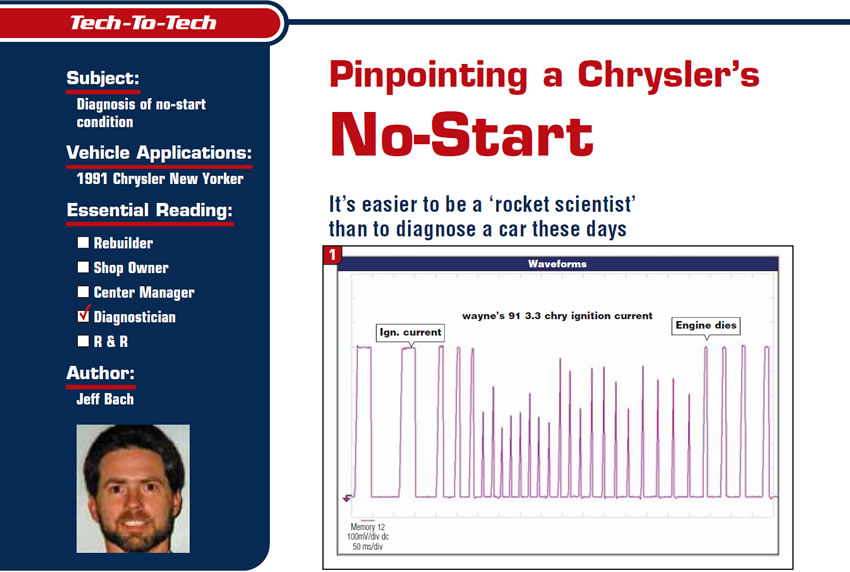Finish the Swing
The reference to finishing the swing has to do with the completeness of our actions. In golf, if you stop the swing just as the club makes contact, the ball isn’t likely to go very far or straight or up in the air for that matter. Any pro will tell you that you have to finish the swing, meaning to follow through, if you want good, consistent results.

Solving Common Noise Problems, and Problems with No Solutions
Noise is one of the great mysteries of the transmission world. Noise is subjective, and people rarely can interpret noises in the same manner. Noise travels much faster and farther in solid objects such as the steel of an automobile than it does in air. There is driveline noise, engine noise, suspension noise, exhaust noise and road-generated noise.
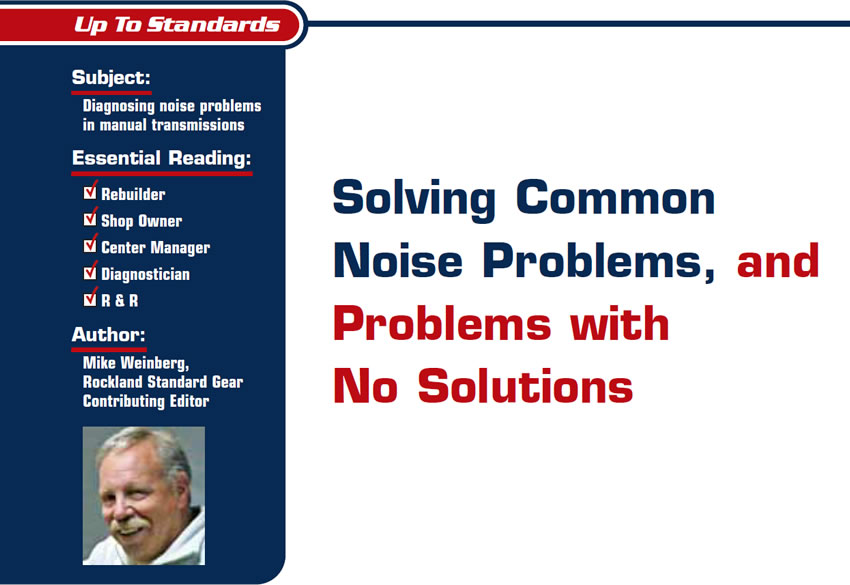
Toyota/Lexus U140/240
In past articles and bulletins we have talked about functions of the torque-converter-clutch (TCC) solenoid on the 4L30-E family and how on BMW and 2000-up Isuzu models this solenoid is responsible for TCC application and a reverse-inhibit solenoid. The U140/240 series has “one-upped” that, as we are going to find out in the following illustrations.
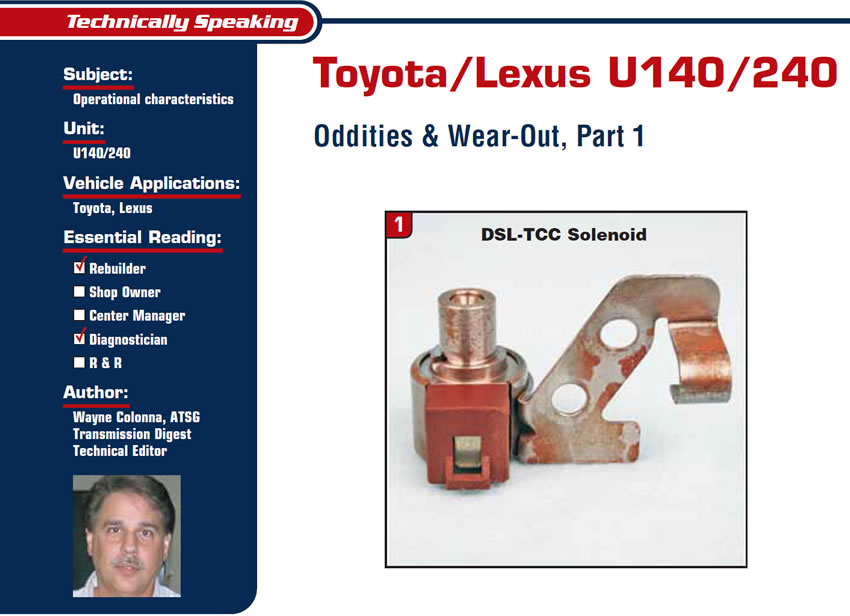
August 2008 Issue
In This Issue
Chrysler PCI(Programmable Controller Interface)
Module-to-Module Bus Communication, Part 1
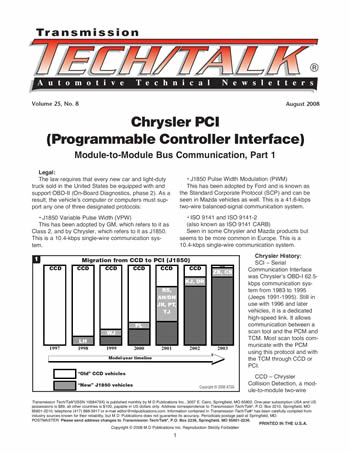
AW55-50: Differences Among Manufacturers, Part 2
Last month we explained the variety of operating modes the different manufacturers use to control AW55-50 units in their vehicles. Knowing the modes and when they are activated is the first step in making an accurate diagnosis. A symptom reported by a customer may be normal, intended operation for one brand of vehicle and a legitimate problem in another. As part of your diagnosis, you also should be aware that every manufacturer has at least one transmission-control-module (TCM) reflash or replacement bulletin to address various transmission concerns.
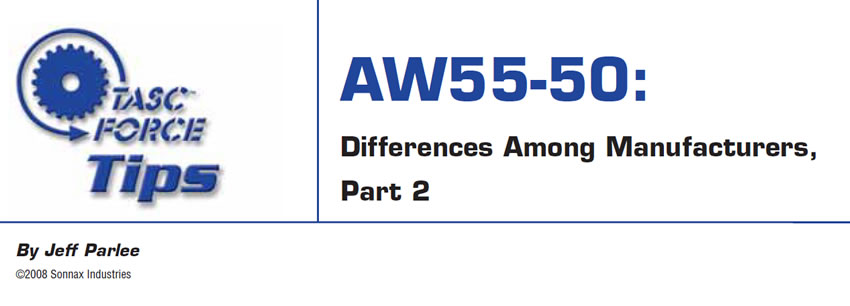
AW81-40LE: The Valve Body
Picking up where we left off last month as promised, we are going to take a closer look at the valve body and the operation of the timing solenoid (see Figure 1). But before we get into it, there are a couple of things to be aware of.
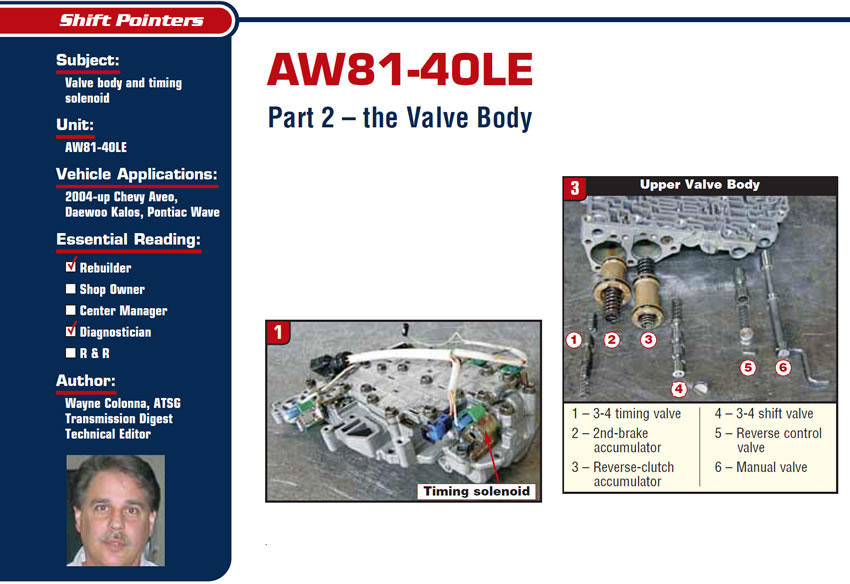
What’s the Connection?
We had a similar problem come to the shop in a 2000 Toyota Tacoma. The customer’s complaint went like this: “When I have the cruise control on and I turn on my left turn signal the cruise control turns off, but not when I turn on my right turn signal. I also notice that the transmission drops out of overdrive when I turn on my left turn signal but not when I turn on my right turn signal.”
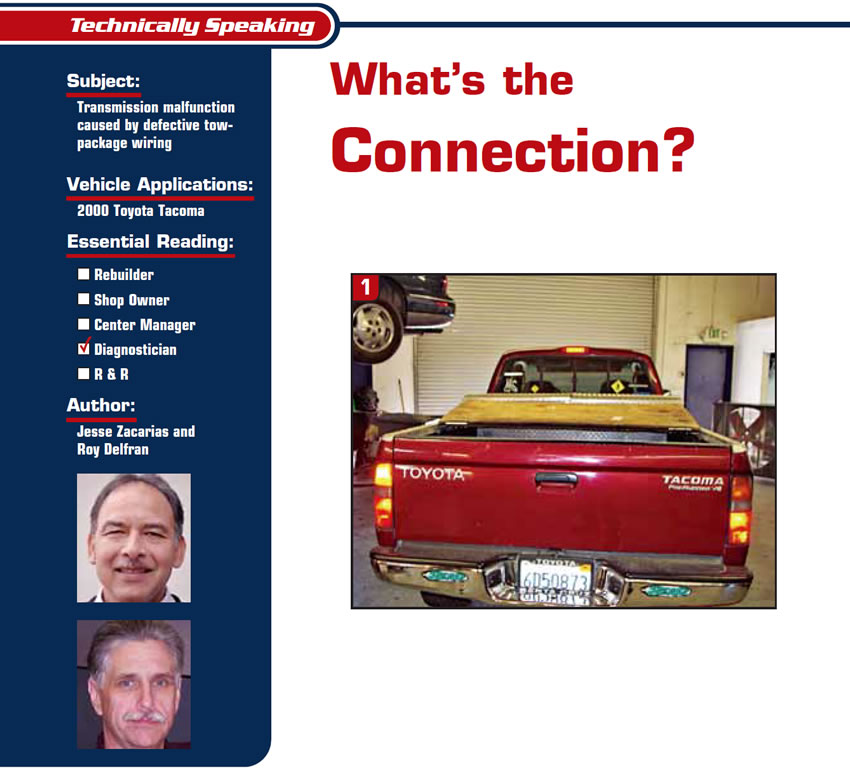
Solving the Mystery of Stator-Cap Wear
At this point most engineers were assuming that the stator-cap material needed to be upgraded, and that is where they focused their research. However, we all know what assuming does.

The Whole Package
Since consumers have the luxury of being more finicky about their purchases, our industry needs to fight harder for every sale and be sure that when we make one it is profitable and creates or continues a long-term relationship. In times like these we want to offer the consumer the whole package as it relates to the entire experience of doing business with us; the “END ALL TO BEAT ALL” of the industry. It’s the “WOW!” factor, the “I CAN’T BELIEVE I’M IN AN AUTO REPAIR SHOP!” factor.

Dual-Clutch Transmissions – the Future Is Here Now
The automatic transmission equipped with a torque converter has been the mainstay of conventional drivelines since World War II. A great deal of research, improved designs and advanced transmission technology have brought us excellent five-, six- and seven-speed automatics that perform extremely well. Manual transmissions are still more efficient from the fuel-economy standpoint but depend on the driver’s skill and ability to drive in a fuel-efficient manner. The EPA does not like manual transmissions because they shift at closed throttle. Automatics shift at open throttle and make control of emission levels much easier.
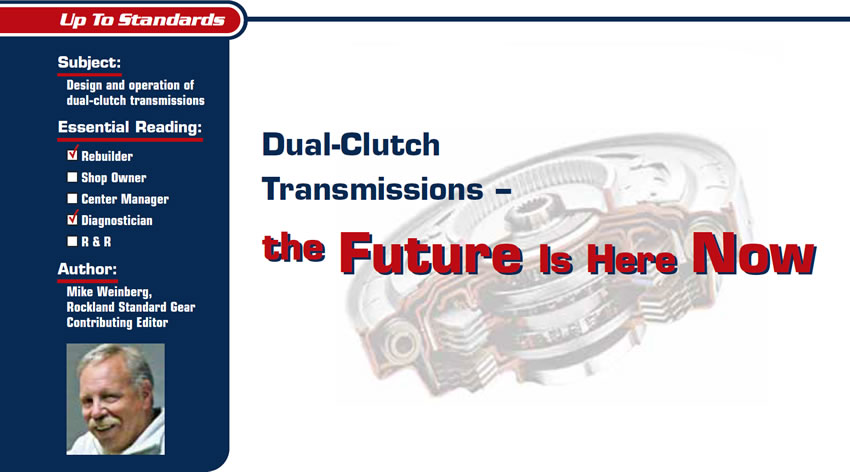
July 2008 Issue
In This Issue
2001 & Up Ford 4R70W Family: Valve-Body Change
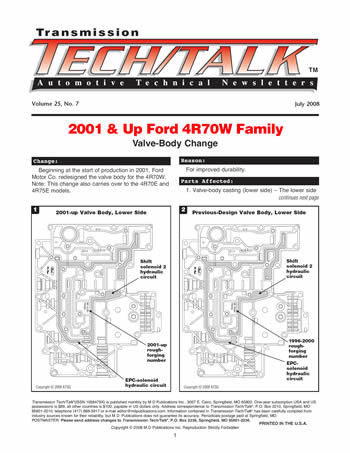
Pinpointing a Chrysler’s No-Start
This time, however, he was trying to decide on whether to retire this car and move on to another. He has two vehicles already running well, and this one is a spare. Clean as a pin for a ’91 and still well under 100,000 on the clock. Ideally, I’d like to have been able to tell him what the cost would be to get the car running without spending a lot of diagnostic time trying to find out why it quit. I mean, it’s a 3.3 Chrysler; how hard can it be?
